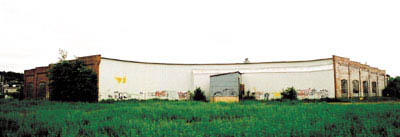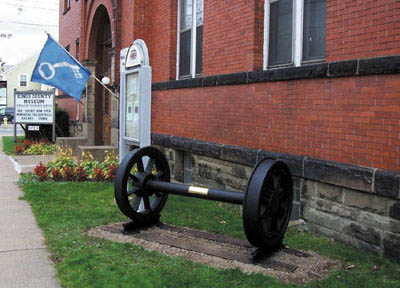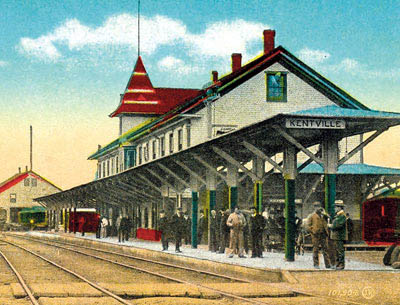
28 November 2008
Kentville Rail Yard Demolition Uncovers History, Spurs Growth
 Kentville Nova Scotia - The town of Kentville, Nova
Scotia had both a problem and an opportunity on its hands. The town needed additional seniors' housing and saw possibilities at a
brownfield site which once housed a CP Rail property. It was used for a century as a railway maintenance, locomotive repair, and
marshalling yard, back to the days of the Dominion Atlantic Railway.
Kentville Nova Scotia - The town of Kentville, Nova
Scotia had both a problem and an opportunity on its hands. The town needed additional seniors' housing and saw possibilities at a
brownfield site which once housed a CP Rail property. It was used for a century as a railway maintenance, locomotive repair, and
marshalling yard, back to the days of the Dominion Atlantic Railway.
The town purchased the seven-hectare site and all associated liabilities from CP for $1 in 2004, with plans to
re-sell it as part of a revenue-neutral project that would see the site's structures demolished and the
removal of any environmental obstacles to redevelopment. Remediation of the site began the same year.

As the former CP Rail property roundhouse was demolished, it
offered up
interesting treasures for the crew working to make way for redevelopment
in Kentville, Nova
Scotia.
"The site was full of structures dating back to the 1800s," says Tom Windeyer, senior environmental consultant with the
Dartmouth office of Stantec Consulting Ltd., the company that developed the remedial action program for the site.
"We found foundations for weigh scales and a coal chute, and 17 drums of grease buried next to the foundations of some of those
buildings," he says. Other soil contaminants included buried caches of asbestos used to insulate locomotive boilers, diesel fuel,
and various polycyclic aromatic hydrocarbons, chemical compounds associated with industrial use of oil, coal, and tar.

Wheels from the front truck of a steam locomotive are
preserved at the
Kings County Museum.
But excavation of the site also revealed historic artifacts.
"The railroad infilled a lot of land toward the Cornwallis River from about 1880 on," says Windeyer. "They used
locomotive boiler tubes as part of the fill and we recovered some of them." Another important historical find was two wheels from
the front truck of a steam locomotive.
"As a railfan I knew their significance," says Windeyer. "They hadn't made spoked wheels since just after the turn of
the last century and these were from 1891 or older. They were encased in concrete blocks and used as the bases for lamp standards.
Because they were preserved inside the concrete, they were in beautiful condition."
The demolition of the Kentville Roundhouse, a circular building designed to orient locomotives with the proper track, was considered
contentious because of its historical significance.
"It was built in two stages, with the latter stage constructed in 1938," says Windeyer, noting that parts of the building
were extremely unstable. Without funding, the building was torn down instead of rehabilitated.
"The roundhouse and coal chute had very well-made foundations," says Windeyer. "The roundhouse foundation
was made of 12 layers of concrete reinforced with steel rail. For the base of the turntable it took us three days using a large
excavator with a hydraulic breaker. It took us a day-and-half on the coal chute."
Some of the sections of rail carried date stamps of 1887 and 1891.

A colourized archive photo of the Kentville station in its
glory days.
The roundhouse demolition revealed vintage bottles, and even an old cigarette package, but gave up its most fascinating artifact in
the summer of 2007 - a tin can time capsule imbedded in its concrete walls.
Kyle Eye and Doug Croft, employees of excavation contractor G.K. Morse & Sons of Centreville, noticed the container as the walls
were being demolished and retrieved it.
Inside was a letter dated 10 May 1938, signed by John DeWolfe, George Gillis, Harry Lynch, Harvey McLeod, and Albert
Roberts, employees of the railroad. The note asks that whoever finds the tin return it to one of the note's signatories for a $1
reward.
"The workers who found the note were just about the same age as the people who wrote the note were then," says Windeyer, who
decided the discovery shouldn't go unrewarded.
"I gave them both a one dollar bill in 1938 currency to commemorate the event," he says.
The note and other artifacts from the site were donated to Kings County Museum in Kentville.
|